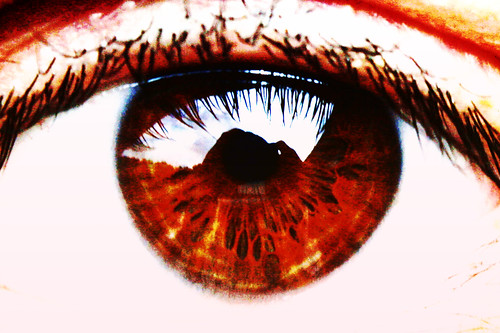Point of view is the most basic element to any book, and the first thing you're going to have to decide when you sit down to write (or stand, I'm not here to judge your style). Are you going with classic fly-on-the-wall, personal firsthand storytelling...or something even more bold? POV isn't something you should determine on a whim. Know who exactly is telling the story, and why.
Perspective
There are only three types of POV in book-writing, and that makes it easy to pick one. Perspective in books changes everything, so you have to make a decision when you pick your POV. Each option has its own advantages, and disadvantages that will limit you as a writer.
- First-person POV
When you're telling a story from the first person, a single character is relating the tale. You'll be writing lines like I looked her straight in the eye, or I took a deep breath before speaking. But when you're in a character's head, you've got to get inside their head. Know what they're thinking, feeling, experiencing every moment -- and put all of that on the page. Do it correctly, and you'll draw readers deeply into the head of a single character with the first-person POV.
Usually, the main character is the one telling the tale (think Twilight), but it's not unheard-of to write from the first-person POV of a secondary character. Doing this can be a much bolder choice, but difficult to write. When you write in the first person, you're immediately limiting yourself because the character you're writing knows only what they, themselves, are thinking and feeling. The character has to figure out every other character based on mere observation and interaction. Insights may be wrong, motives may be second-guessed, and the reader will be on the exact same journey with your character. You as a writer have to be in every character's head, but the character you're seeing through in the book probably doesn't have that skill.
- Third-person POV
When you write in the third person, you take a fly-on-the-wall perspective on everything that's going on. No one is "I," and every character must be described by their name or a pronoun (you know, she, he, all that good stuff). The third person you're writing through may be a Godlike person who sees and knows all, easily slipping in and out of the heads of every character to deliver insight on what they're thinking, or it can be someone who only clearly sees one or two main characters in the book. The third-person POV is usually removed from the events and characters of the book, relating the tale after the fact or as it happens -- but rarely, it may be revealed later that the third-person narrator of the book is actually a character within the story itself.
- Second-person POV
The rarest of all perspectives in books, second-person POV is also the hardest to write. When you write in the second person, you are directly addressing the reader (as I'm doing now) with words like you and your. The second-person POV, also called second-person narrative, is most often used in self-help and spirituality books, but some bold writers have authored entire fiction books by actually maneuvering you -- the reader -- as a character in the story. Bright Lights, Big City is a famous example of this style. A line from the book reads as follows: You are leaning back against a post that may or may not be structural with regard to the building, but which feels essential to your own maintenance of an upright position.
It's incredibly daunting to write an entire book in the second-person POV, but you can sprinkle it into books written from another perspective. Directly addressing the reader infrequently can add a powerful element to any story, and further draw the reader into the book. Acknowledging that the narrator knows he/she has an audience can make the reader pay a little more attention to what they're reading, but don't overdo it.











This comment has been removed by a blog administrator.
ReplyDelete